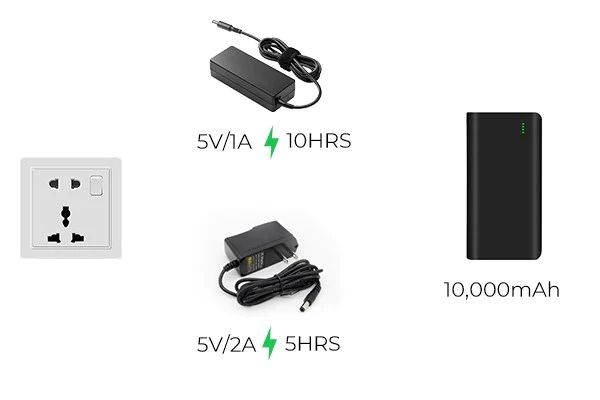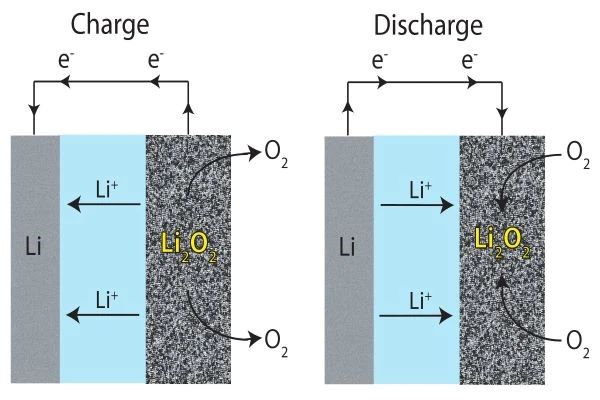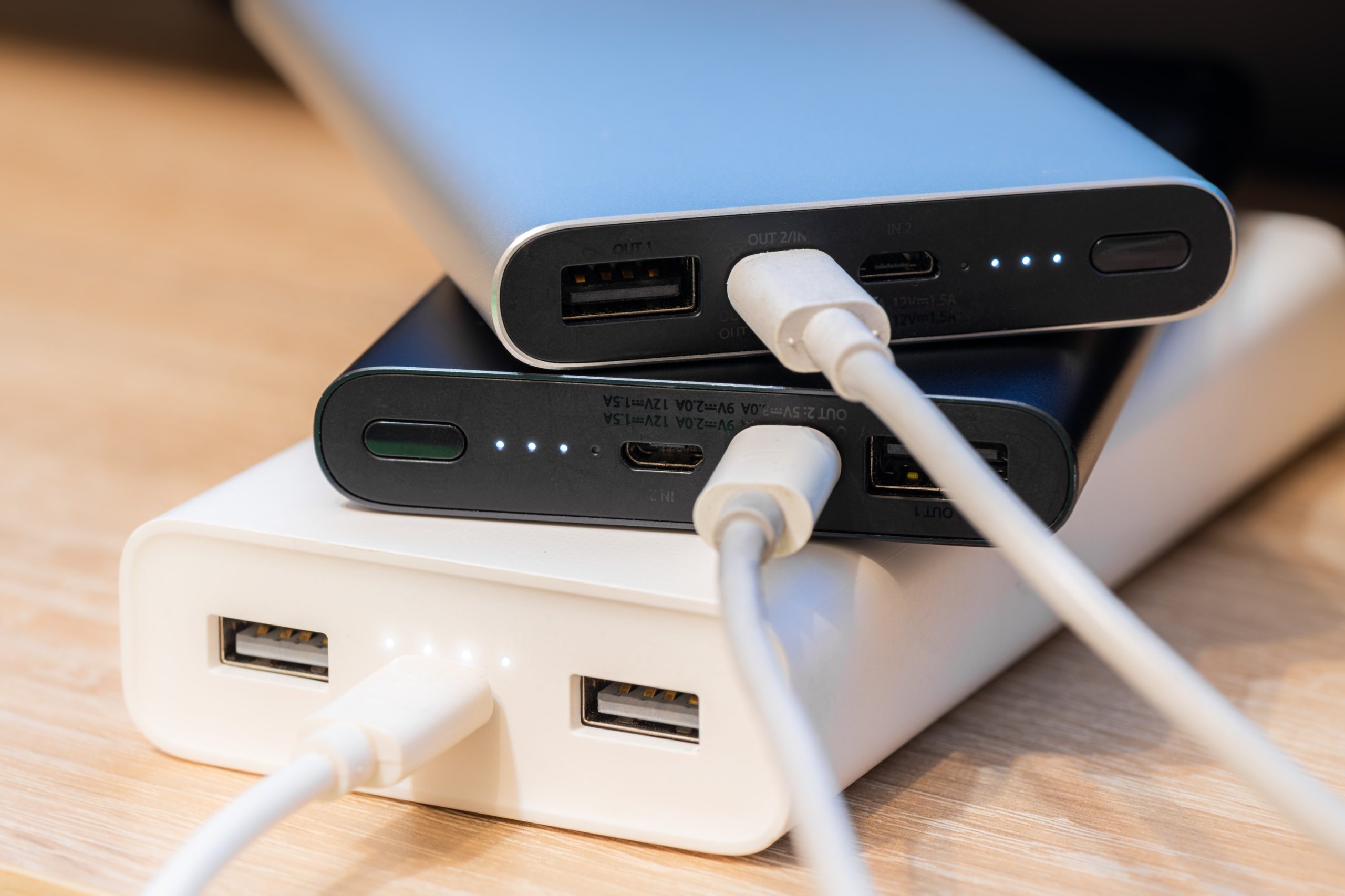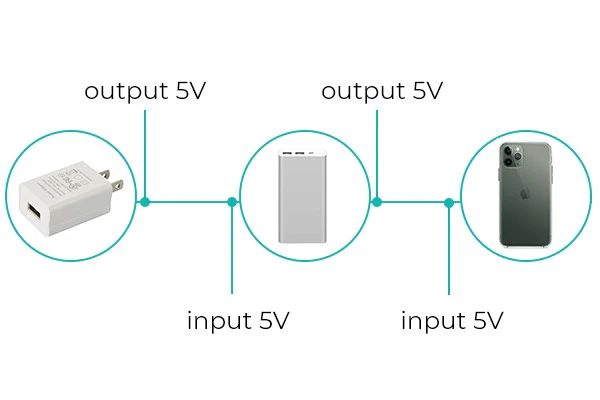Highlights
- Opt for a power bank with double the capacity of your device’s battery for optimal charging.
- Balance between high capacity and portability based on your daily usage and travel needs.
- Seek fast charging support like PD, QC, or PowerIQ for quicker power-ups.
- Prioritize safety features and choose reputable brands for reliability and efficiency.
Even in today’s age of extreme battery backup on our smartphones, you never know when you might need a power bank.
Whether on a long flight or a tiring train ride, power banks have clearly become an essential electronics item we carry.
But which power bank is the best for you?

Before purchasing a power bank, there are several crucial factors to consider to ensure you get the best value and performance for your needs.
Here’s a comprehensive guide based on findings from various sources:
Capacity and Battery Power

Although this is not something to be told, the capacity of the power bank is always the most paramount factor in your buying decision.
It’s recommended to choose a power bank with at least double the battery power capacity of your device.

For instance, if your phone has a 2,500mAh battery (hardly anyone), opt for a power bank with at least 5,000mAh to ensure you can fully charge your device at least once and have the power to spare.
However, keep in mind that the actual number of charges can vary due to power loss during the charging process.
Portability vs. Capacity

While higher capacity might seem better, it also means a larger, heavier power bank. Consider how you’ll use the power bank.
If you need something for everyday carry, a compact model with 10,000mAh might offer the best balance between portability and sufficient charging capacity.
Anything larger than that and it will become too bulky for everyday travel.
Fast Charging Technologies

Look for power banks that support fast charging technologies compatible with your devices, such as Power Delivery (PD), Qualcomm Quick Charge (QC), or PowerIQ.
Remember, the wall charger you use to charge the power bank should also support these technologies to achieve the fastest charging times.
Port Types and Connectivity

Ensure the power bank has the types of ports you need for your devices.
USB-C is becoming the standard for its ease of use and compatibility with fast charging.
If you use devices that support wireless charging, consider a power bank that offers this feature as well.
Brand Reliability and Warranty

Opt for power banks from reputable brands as they are more likely to offer reliable performance, quality construction, and customer support.
Verified reviews can provide insights into the product’s real-world performance.
Brands matter because they often correlate with the reliability and safety features of the power bank.
Reputable brands include Anker, Xiaomi, Tronsmart, Aukey, ZMI, and Pineng.
Apart from that getting from reputed brands also guarantees that you won’t get a defective product.
Safety Features

Safety should never be overlooked, especially in a device with the kind of batteries power banks have.
Look for power banks with built-in protections against overcharging, short-circuiting, and overheating to safeguard both the power bank and your devices.
Consider Special Features

Depending on your needs, features like an LCD display for precise battery level indication, pass-through charging (charging the power bank and a device simultaneously), and even solar charging capabilities might be beneficial.
Wireless charging is yet another feature that may be offered if your phone has support for it.
Price vs. Quality

While price is an important consideration, investing in a slightly more expensive power bank from a reputable brand can offer better reliability, durability, and efficiency in the long run.
Avoid extremely cheap options as they may compromise on quality and safety.
Compliance and Certifications

Ensure the power bank complies with airline regulations if you plan to travel with it.
Most airlines allow power banks under 100Wh (approximately 20,000mAh) in carry-on luggage.
Choosing the right power bank involves balancing between capacity, portability, charging speed, and additional features.
By considering the above points, you’ll be well-equipped to make an informed decision that best suits your charging needs and lifestyle.

FAQs
How do I choose the right capacity for a power bank?
Select a power bank with at least double the battery capacity of your smartphone or device to ensure at least one full charge. Consider your device’s battery size and the power bank’s efficiency rate.
Is it worth investing in a power bank with fast charging capabilities?
Yes, a power bank with fast charging technologies like Power Delivery or Qualcomm Quick Charge can significantly reduce charging times for compatible devices, making it a valuable feature for users on the go.
What should I look for in terms of portability and capacity?
If you need a power bank for daily use, a compact model around 10,000mAh offers a good balance of portability and sufficient charging capacity. For longer trips, a higher capacity might be more suitable despite increased size and weight.
Are there any specific safety features I should look for in a power bank?
Yes, ensure your power bank has built-in protections against overcharging, short-circuiting, and overheating to safeguard both the power bank and your devices.
How important is the brand when selecting a power bank?
Choosing a power bank from a reputable brand is crucial as it often guarantees quality construction, reliable performance, and customer support. Well-known brands are also more likely to offer warranties and comply with safety standards.
How can you Connect your device to a power bank ?
Most power banks will have at least one of the below charging inputs.
USB-A: The rectangular-shaped port built into basically every hard drive and TV of the past 20 years.
Micro/mini-USB: The miniature USB variant typically used in older smartphones and some portable devices is becoming less common but may still be the connection option for older power banks on sale.
USB-C: This is becoming the default USB option with the ability to simply plug into the power bank regardless of the orientation. Apple finally abandoning its proprietary Lightning connection for its iPhone 15 range will also push the USB-C format forward. USB-C should be at the top of your list of inclusions when shopping for your next power bank.
Wireless: A small number of models let you charge wirelessly by placing your smartphone on the power bank. Your phone also needs to support wireless charging for this to work. There are also some models that can charge the Apple Watch, which is both specific and very handy if you happen to have one.
USB firmware running beneath the surface tells the inputs what to do, like how much data, power and speed can run through the cable. This includes ‘fast charging’, which is a popular feature with power banks.
How long does a power bank take to charge a device?
Most power banks can charge a standard 3000mAh device such as a smartphone in a few hours. The power bank’s recharge time isn’t as much of an issue, as you can leave it plugged in overnight, but faster is generally better.
A few things need to match up in order for a power bank to charge your device. The power bank’s output needs to meet the requirements of the device you want to charge.
Smartphones can charge off a small current, tablets require more, and laptops and handheld consoles require more again.
If the output matches or exceeds the device’s demands, it will charge while in use. If the output meets, or just falls short, of the device’s requirements, it will slowly increase battery life, but won’t charge during use.
In this instance, the power bank is ‘powering’ the device, not charging it. However, it will charge if the device is turned off.
What Does A Quality Power Bank Look Like?
The easiest and quickest way to judge the quality of a power bank is to check the quality of its case. What materials are used? How well is it designed? Are there any signs of damage? Is the button easy to press?
A quality power bank should have:
1) A clean and complete surface, nothing out of shape. There should be no signs of mechanical damage, no corrosion on any of the connectors.
2) Clear markings about the power ratings, avoid anything blurry that you cannot read.
3) Make sure any buttons and lights work correctly.
How many times can the power bank charge your phone?
If a power bank is marked as 10,000mAh 3.8V (38Wh), that means its battery capacity is 10,000mAh, the voltage of the battery core is 3.8V, and the battery core energy is 38Wh.
Rated capacity (mAh): Also known as nameplate capacity, is the least output capacity under the rated voltage and current.
Conversion efficiency: This indicates the value difference between the battery core energy and rated capacity.
A power bank has a battery capacity as 10,000mAh; the battery core voltage is 3.8V which will increase to 5.1V when it’s charging a phone.
How long will the power bank last?
The lifespan of a power bank depends on two things: how well the power bank is made and how much you use it.
The number of charge-discharge cycles, decided by the battery core and other vital components, varies amongst power banks.
Typically, this is between 300 ~ 1,000 cycles and if you want my advice, you should definitely avoid any power bank that has less than 500 charge cycles.
How long does it take to charge the power bank or the phone fully?
The charging time depends on the capacity of the powered device (PD) and its input current which equals the output current of the power sourcing device (PSD)
Charging time = battery capacity / actual input current.
How Safe is the Power Bank?
You cannot be too more careful with electronic devices, including power banks. They should have protection mechanisms to prevent any danger caused by electricity.
There are several underlying protection mechanisms: over-current protection, under-voltage protection, short-circuit protection, over-temperature protection and overvoltage protection.
This information can usually be found in the user manual.
Also Read: Apple Issues Advisory for Safe Smartphone Use While Charging
Also Read: Fast Charging Your Apple Watch: What You Need to Know
Also Read: Harvard’s Breakthrough in Solid-State Battery Technology Promises EV Charging in 10 Minutes
